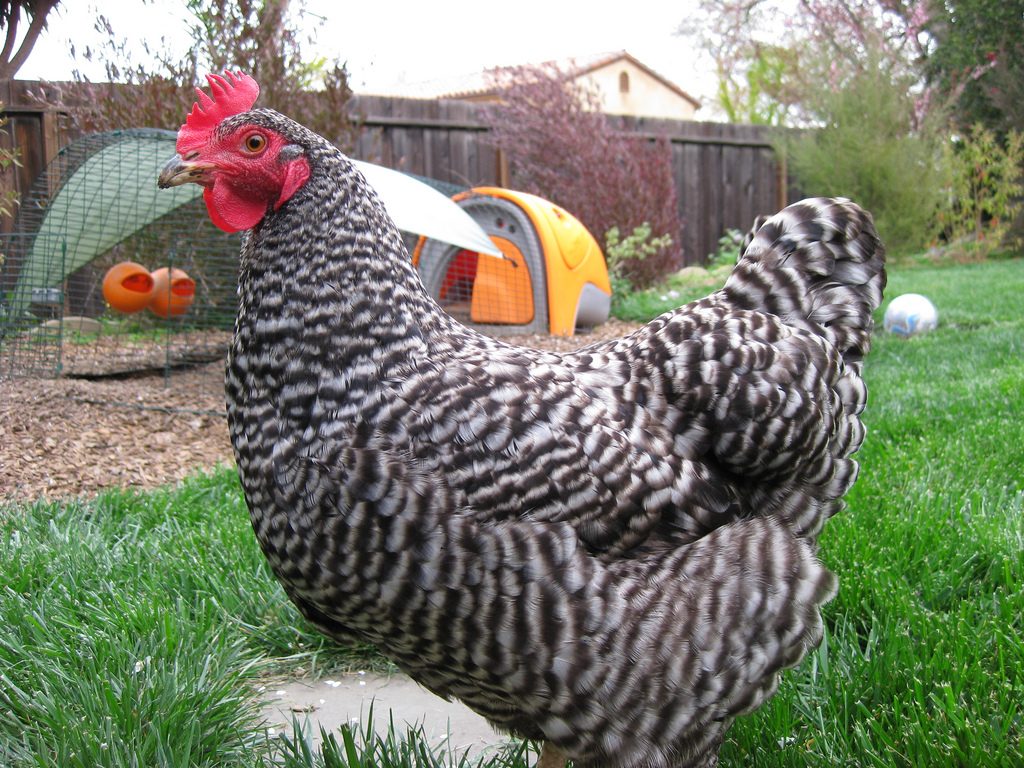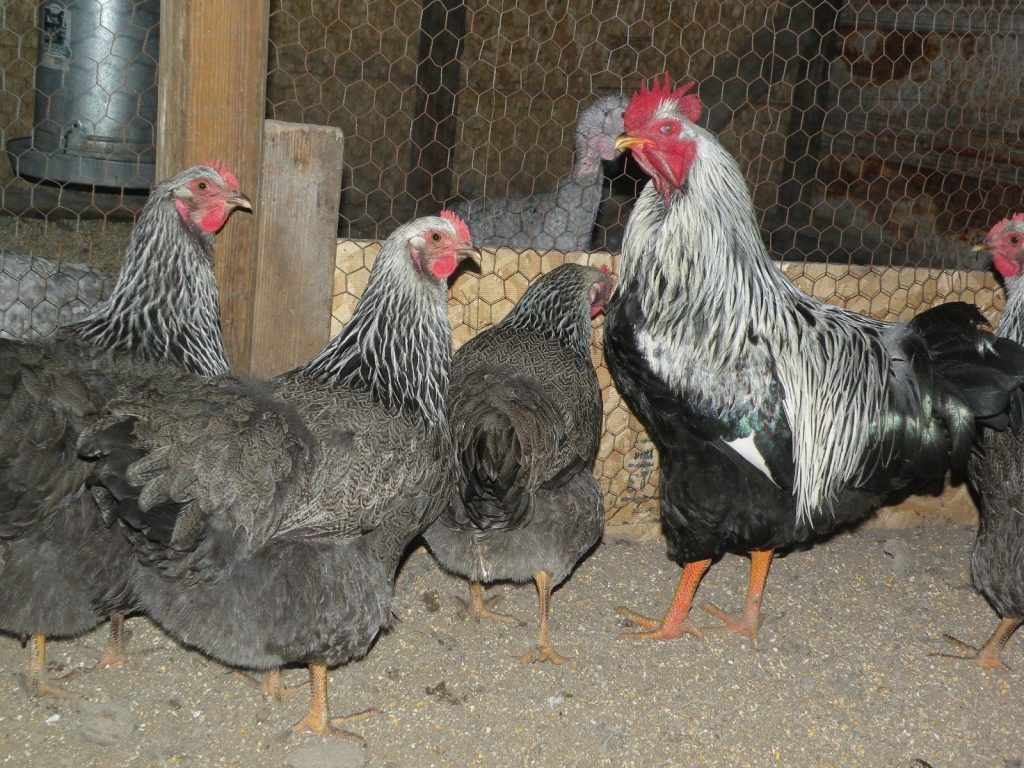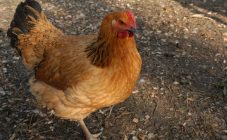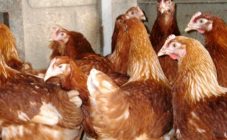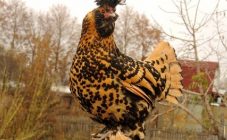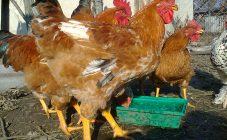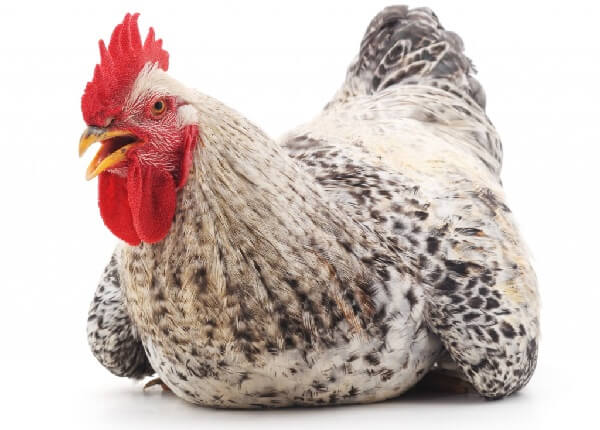Chickens are one of the most popular household birds. There is a wide variety of chicken breeds. Especially valuable are those species that are capable of laying eggs and at the same time can be grown for meat, since this is very profitable and economical. These varieties include Plymouthrock chickens. Additionally, they have high productivity rates and are not capricious to the conditions of detention.
general information
This type of chicken was bred by the breeder W. Worcester in the 60s of the XIX century. The launch site is the city of Plymouth in America. The species was based on Dominican and Langashan chickens. The genes of Brahma and Cochinchins were taken. The first part in the name of the breed is interconnected with the city of Plymouth, and the second is translated as "rock", which is associated with the large physique of the bird.
Chickens of this species until the 20th century were grown only overseas. In 1911 the Plymouth Rock breed appeared in Russia. Since then, breeders based on it have produced more resistant and productive breeds. Today scientists are also working on them.
The most common types of this breed of chickens are:
- White Plymouth Rock chickens: mainly used in industrial farming. The birds are white without any blotches. They are sustainable, have high-quality dietary meat, which is characterized by unique taste. Show high rates of egg production.
- Striped Plymouth Rock chickens: slightly inferior in terms of basic characteristics to white chickens. However, they can provide a lot of valuable meat. Some do not like its yellowness, which is characteristic of this species, but according to other parameters it has a higher category. Often striped Plymouth Rock is bred for beauty. Breeders use them as a basis for breeding other varieties. Their color is mainly black. The feathers have narrow gray-blue stripes. There is also striping on the down, but less noticeable. The unique design is created by the transverse stripes. Roosters are lighter than hens, as their stripes are narrower.
There are also other colors:
- black: the main color is black, there is a greenish tint;
- yellow: the base color is yellow, light brown is also present. These colors have not only the feather, but also the feather shaft itself;
- partridge: brown, golden brown and black are present here;
- blue: uniform blue with lighter down;
- pale yellow.
Also distinguish between American and English Plymouthrock breed. Their difference lies in size. American chickens are smaller than English chickens.
The Plymouth Rock breed is easy to distinguish from other chicken species. It is in high demand and is used by most farmers and poultry farms.
Description of the breed
Appearance and physique: in terms of external parameters, Plymouth Rock is more like a meat breed, as it is very strong and stocky.
Plymouth rock chicken breed description:
- The body is wide, resembles a rectangle in shape, slightly elongated.
- The chest is large in width, protrudes slightly forward. These chest sizes provide the bird with a good and proud posture.
- The back is just as wide.
- The wings are high and small.
- The tail is small, semicircular, thick. The tail is the same color as the rest of the body.
- The thighs and thighs are powerful and muscular, densely covered with feathers. The hocks are featherless and yellow in color. Light claws.
- The neck is completely feathery, medium in size, straight.
- The head is medium in size.
- The scallop is red, straight, has 4-6 teeth of regular leaf-like shape. Earrings and earlobes of similar red color. The earrings are oval shaped.
- The bill is large and has a dull yellow-gray color.
- Eyes with orange irises.
Developmental defects include:
- head of irregular elongated shape;
- limbs are too close;
- the beak is dark in color;
- the pattern on the feathers is vague;
- hunched back.
Personality: fearless, non-aggressive, curious. They don't feel anxious or uncomfortable. They quickly adapt to their owner and home. During feeding, their behavior is calm. Transport and stress are tolerated without complications. The psyche of Plymouthrock chickens is stable. They have good immunity, so diseases often bypass them. The sense of self-preservation is poorly developed.
Maternity instinct: the breed of these chickens has a very well developed sense of hatching. The common brood hens are the striped Plymouth Rocks. They hatch eggs well, protect chicks and train them to find food. When a hen hatches eggs, she rarely leaves the nest, which means that the incubator is not needed.
Egg production: the Plymouthrock breed is presented as meat and egg, so one of the indicators will not be very large. However, chickens have a good level of egg production. Chickens lay from 160 to 200 eggs per year. On average, one bird lays 13 eggs per month. One egg weighs approximately 60 g and is light brown in color. The time when a young hen begins to lay eggs depends on her breed, health and nutrition. Approximate age 6-7 months. This age is considered early.
Meat quality: birds reach sexual maturity at 5-6 months. After this age, birds stop gaining weight. The maximum chicken weight is 3 kg. The quality of the meat is at the highest level, therefore, poultry is often raised for slaughter, and not for obtaining eggs. Chickens with white feathers are believed to have higher quality meat.
Breeding features
This type of chickens does not have special requirements for the surrounding conditions. The main condition for their maintenance is cleanliness in the room where they are located.
It is necessary to constantly change the flooring. Peat, straw or hay are suitable as bedding. The coop should also have a lot of space without partitions, and there should be good lighting and ventilation. It is necessary to install incandescent lamps. In winter, daylight hours should be at least 11 hours. The most comfortable temperature is 20 degrees, humidity is 65%. The chicken does not tolerate too high a temperature. In the cold season, additional heating is not needed, it is only necessary to close up all the holes so that there is no draft. It is necessary to arrange individuals so that 10-15 birds are located per square meter.
In the summer, the bird must be walked on a special yard. It must be fenced off. If in the area where chickens are bred there are birds of prey (golden eagle, peregrine falcon, etc.), the walking area should be covered with light-transmitting material (for example, a net). In winter, you cannot walk the bird, since at temperatures below five degrees, earrings and comb that are not covered with feathers can freeze.
Despite their good health, Plymouthrocks can also contract infectious diseases or parasites. Therefore, it is necessary to constantly inspect the chickens. Signs of poultry disease include:
- there are fewer feathers;
- poor appetite;
- weight reduction;
- bloated belly;
- birds become either restless or apathetic.
By the end of autumn, the bird changes its cover. During this period, a correct and complete diet is important.When chickens moult, they run poorly, which is not related to their health.
This breed is not capricious to food. For small chickens, low fat cottage cheese, crushed eggs, herbs, corn flour are well suited. Two-week-old babies can be fed mixed feed and different types of flour. The food can be mixed with yogurt. One month old chicks can be fed with coarse grains. Whole grains, boiled vegetables, grass, combined feed (barley, corn, wheat) are suitable for half-year-old adult chickens.
Advantages and disadvantages
The pluses of the breed, compared to others, include:
- Large body weight.
- High quality meat.
- High rates of egg production.
- Good health.
- Not picky about food.
- Calm nature, allowing them to be kept with other animals.
- There is no need to build tall hedges as they cannot fly high.
- Because of their beautiful appearance, they can be bred for exhibitions.
- If this breed is crossed with another species, then the Plymouth Rock gives its best characteristics.
The breed has no significant disadvantages. A particular drawback is the long appearance of feathers in chickens, which extends to six weeks. To reduce this period, it is necessary to formulate the correct diet, which contains useful trace elements and vitamins. The high cost is also a disadvantage of the breed.
Plymouthrock hens have excellent breeding characteristics. Due to its high egg production and good quality meat, this species is in demand among poultry farmers.
